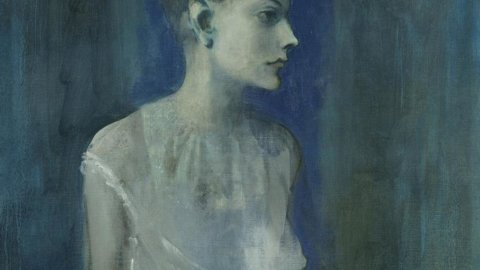Barcelona changed its face in 1888 with the great Universal Exhibition, which introduced disruptive ideas of modernity in a capital still decentralized from the advanced heart of Europe. New ways of life, new well-being and new creative visions accompanied the industrial and economic expansion of the region.
In those years, in Barcelona, the day continued into the night and the cafes and meeting places along it the Ramblas and in Gothic Quarter they throbbed with people and meetings. Poets, intellectuals, painters were based on The four cats and from here they swarmed everywhere, often landing in Paris.
However, the cultural and economic growth of the Catalan capital was accompanied by marked social tensions which in July 1909, during what was called the Tragic Week, resulted in a series of violent protests and a bloody repression which decreed the end of this unrepeatable season .
These fertile and restless years and the colorful, bloody forge of talents that animated them give an account of La rosa di fuoco, the great exhibition with which Palazzo dei Diamanti opens the 2015-2016 exhibition season, signed by the director of the Ferrara institution, Maria Luisa Pacelli.
The Rose of Fire, or art and the arts in Barcelona between 1888 and 1909, perfectly reflects the cultural figure of the Diamonds: carefully selected, in-depth, particular, never banal exhibitions. Exhibitions that present extraordinary but little-known artists in Italy (among many Reynolds, Chardin, Zurbarán...) or fundamental turning points in the history of art from new perspectives.
Also in this exhibition, in fact, the great protagonists of the history of art are presented from less obvious points of view: this is the case of the very young Picasso who, although in his first attempts, within a few years conquers the Catalan and Parisian art scene, with the biting trait of his precocious talent. Alongside famous names, artists who are unknown to most are proposed, but are equally of the highest level. Let's think about Ramón Casas, Santiago Rusiñol o Isidre Nonell which, unlike Picasso, they returned to their homeland instead of becoming stars of the Parisian stage.
This is an exhibition of strong colors and strong emotions. It is no coincidence that we pass from the kaleidoscope of palettes of the late nineteenth century to the acid and bright colors of the effigies of modern nightlife, up to the dominant blue of the last room of the exhibition. Because Picasso, and with him other restless souls, chose this color to express the pain and loneliness that progress left behind in his triumphant march.
It is an exhibition that offers beautiful painting but which, gracefully, invites the visitor to dwell on the other arts as well. Gaudí's architecture, of course, but also graphics, furniture, jewellery, ceramics and sculptures. These are limited areas of study, compared to the richness of the proposed paintings, which offer the visitor precious keys to understand how all the arts have been traversed by the same fire of renewal, none excluded.
Ferrara, Palazzo dei Diamanti from 19 April to 19 July 2015.





